Hydrangea Earley Sensation - the intricacies of growing a multifaceted crop.
Panicle Hydrangea Early Sensation (Hydrangea paniculata Early Sensation) is a favorite of gardeners. Many people attribute an epithet to this deciduous perennial culture with many faces, because, depending on the seasonality, it can change the color of the inflorescences. In care, the plant is extremely unpretentious, which does not compromise excellent decorative qualities.
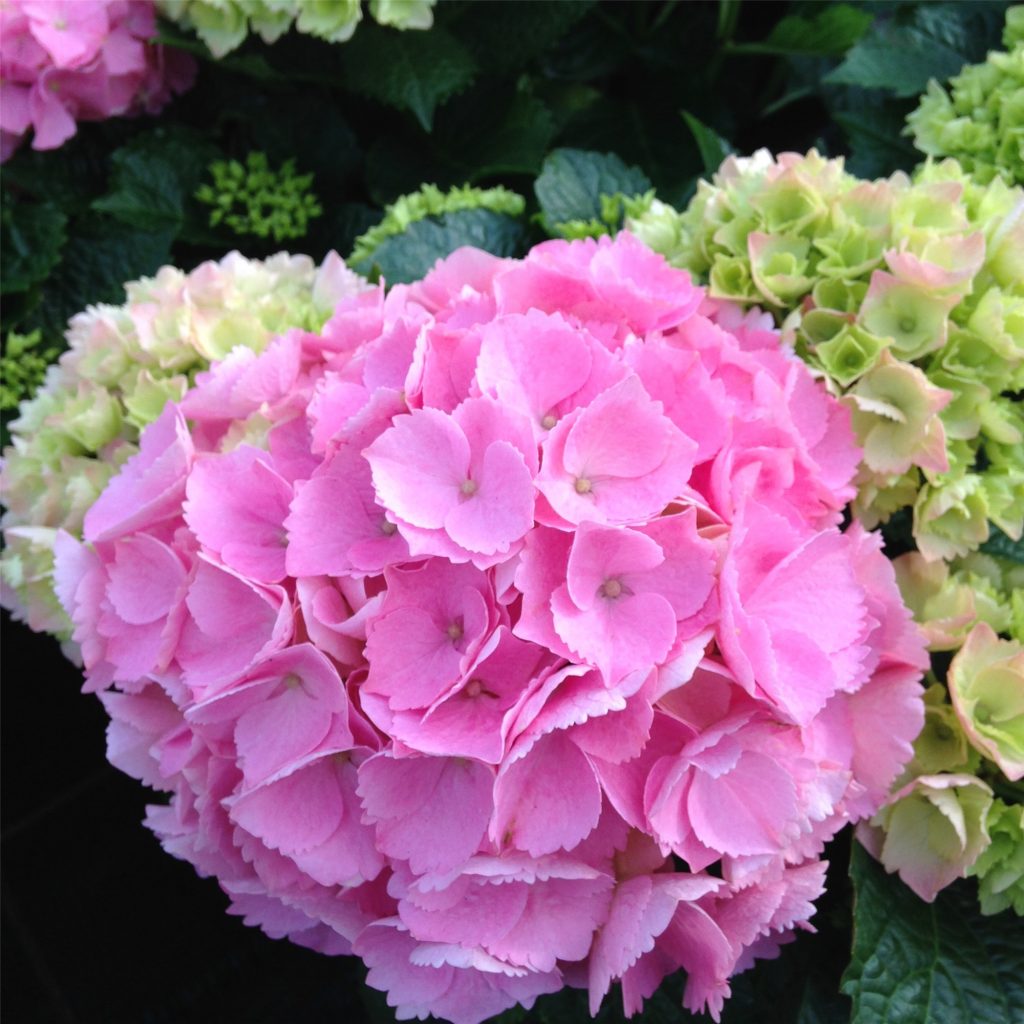
Hydrangea paniculata airlie senseishen
Description of the variety
Hydrangea Early Sensation is an accidental result of the labors of Dutch breeders. The variety was bred in 1991 and only in 2006 was introduced to the international market. It also received a patent and the second name Bulk.
The shrub belongs to perennial large-leaved crops, its height does not exceed 2 m. The shoots are erect, elongated, purple in color. The vegetative processes are covered with oval-pointed leaf plates with teeth along the contour, painted in a rich green color.
The plant enters the budding stage from June, and continues to delight with flowering until the end of the season.
Forms cone-shaped inflorescences both on last year's and on the branches of the current year. In size, each reaches a diameter of 30 cm and consists of large individual flowers with dimensions of 3-5 cm.
A distinctive feature of Early Sensation is a color change throughout the growing season. At the beginning, the buds are painted in a soft cream shade, in the middle of summer it is replaced by a pale pink, by autumn it becomes a rich purple.
The advantages of the variety:
- frost resistance;
- neat appearance;
- minimum care requirements;
- high immunity to diseases and pests;
- early and long flowering.
Landing features
Planting panicle hydrangea is preferable in September so that it can take root sufficiently before the temperature drops.
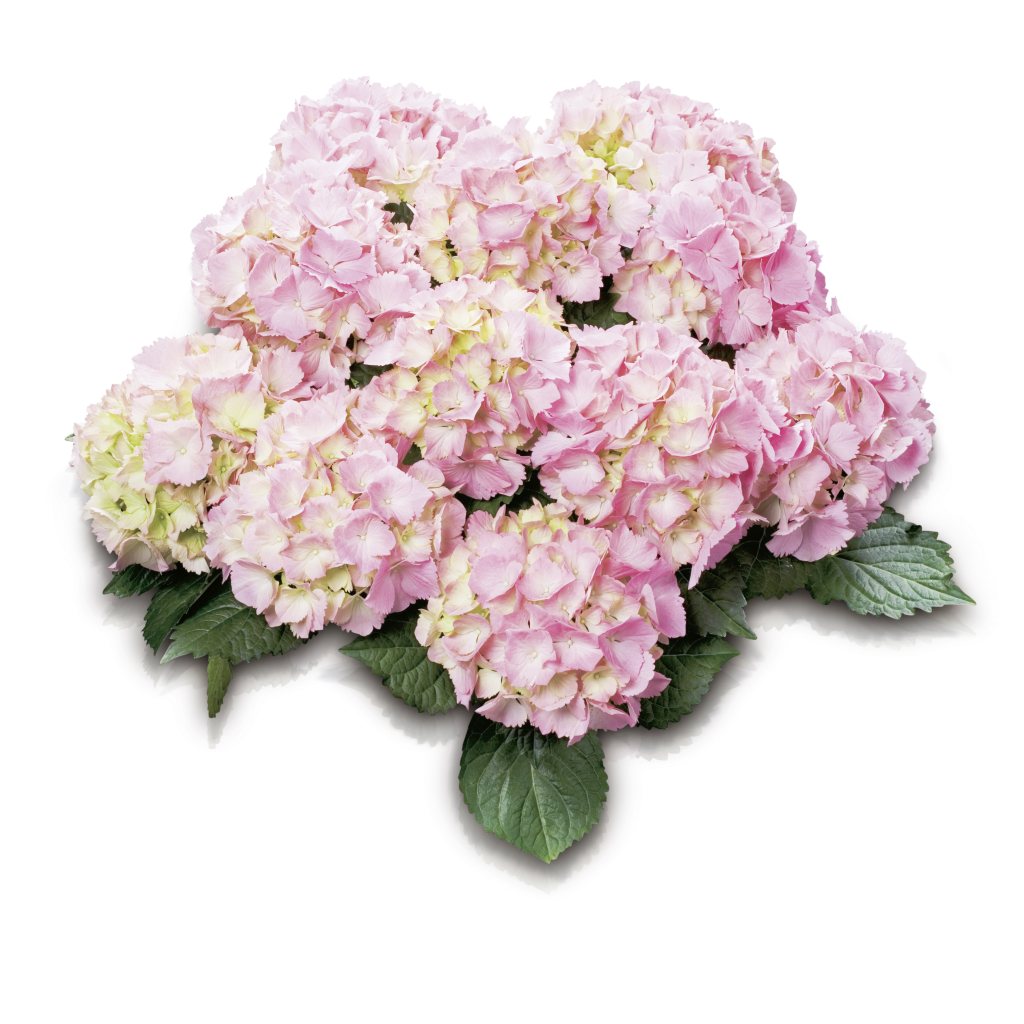
Hydrangea early senseishen description and photo
It is also allowed to carry out work in March, provided there is no threat of frost.
Both options have their drawbacks. In the first case, there is a chance that the bush will not have time to take root, in the second - a later flowering.
Planting a seedling in the summer leads to the formation of buds only after a few years.
Seat selection
The variety can grow quite productively without transplanting up to 50 years, the choice of a place should be approached especially carefully.
Early Senseishen is a light-loving plant, therefore it is optimal to place it on the west or east side of the site.
If it is supposed to be placed near a fence or a building, then it is recommended to maintain a step of at least 1.5 m from the building. The culture does not bloom in shading. You should also exclude planting in a lowland and in an area prone to drafts.
The bush prefers soil with a slightly acidic or neutral environment.Additionally, peat is added to the planting pit by ⅓ of the total volume; some gardeners use soaked hydrogel balls in a particularly hot climate.
Preparation of planting material
You can buy a hydrangea in any specialized nursery, while the gardener has a choice - a plant with an open root system or in a container.
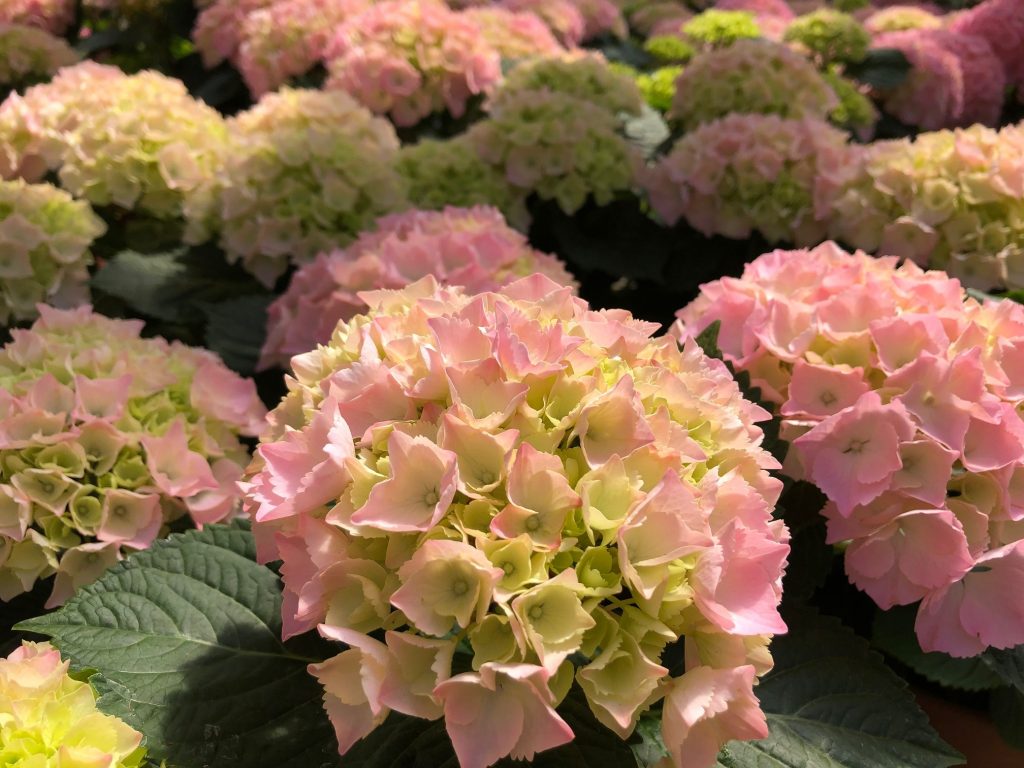
Early sensation hydrangea
Healthy young bushes have no more than 2 vegetative shoots and elastic roots without signs of mold.
If there is a concern that the seller has previously eliminated the symptoms of the disease, you should pay attention to the smell - the affected specimens will have a characteristic amber. In this case, the rhizome should not be overdried.
When buying a seedling with a closed root system, it is carefully removed from the container and a similar inspection is made.
Landing technology
- A hole is dug in a diameter of 0.4 m and a depth of 0.5 m, taking into account the dimensions of the root system of the plant.
- Lay a drainage layer.
- Half of the prepared soil mixture is poured from 2 parts of humus, 2 parts of leafy soil, 1 part of river sand and 1 part of peat. Form a mound.
- A seedling is installed, carefully distributing the roots over the hill.
- The recess is filled with the remaining soil, without deepening the neck - it should be flush with the soil level. The maximum permissible deviation from the norm is 2-3 cm.
- Lightly tamp, watered.
- Cover the near-stem space with a layer of mulch.
Care
Watering
An important procedure that ensures active growth and development of culture.

Hydrangea early sensation
The plant is extremely sensitive to both excessive moisture and periodic drought.
It is recommended to irrigate the shrub twice a week. Depending on the amount of precipitation, the frequency of the procedure is either reduced or doubled.
Water is used rain or warm, settled.
Top dressing
During the season, Earley Senseishen is fed several times - in the spring, at the budding stage and in the fall.
In the first two cases, complex mineral preparations are used as fertilizers; before the onset of cold weather, they are fed with agents with a high content of phosphorus and potassium.
Pruning
To maintain the decorativeness of the plant, it is necessary to do a regular anti-aging and sanitary haircut.
Work is carried out in the spring, before the first leaves appear. During the procedure, all weak and damaged shoots are stopped, healthy segments are shortened to 3 growth buds.
At the same time, it is taken into account that the culture forms flower ovaries on the branches of the current and last season. The exception is young specimens under the age of 4 years, because during this period there is an active formation of the crown.
In autumn, pruning is carried out by ⅔ of the entire length in order to maximally protect the shrub from the effects of subzero temperatures, as well as to stimulate more lush flowering next year.
Mulching and loosening
The soil is loosened several times per season using a special garden hoe. The recommended immersion depth of the tool in the substrate is 5-6 cm. Additionally, loosening is combined with weeding of weeds.
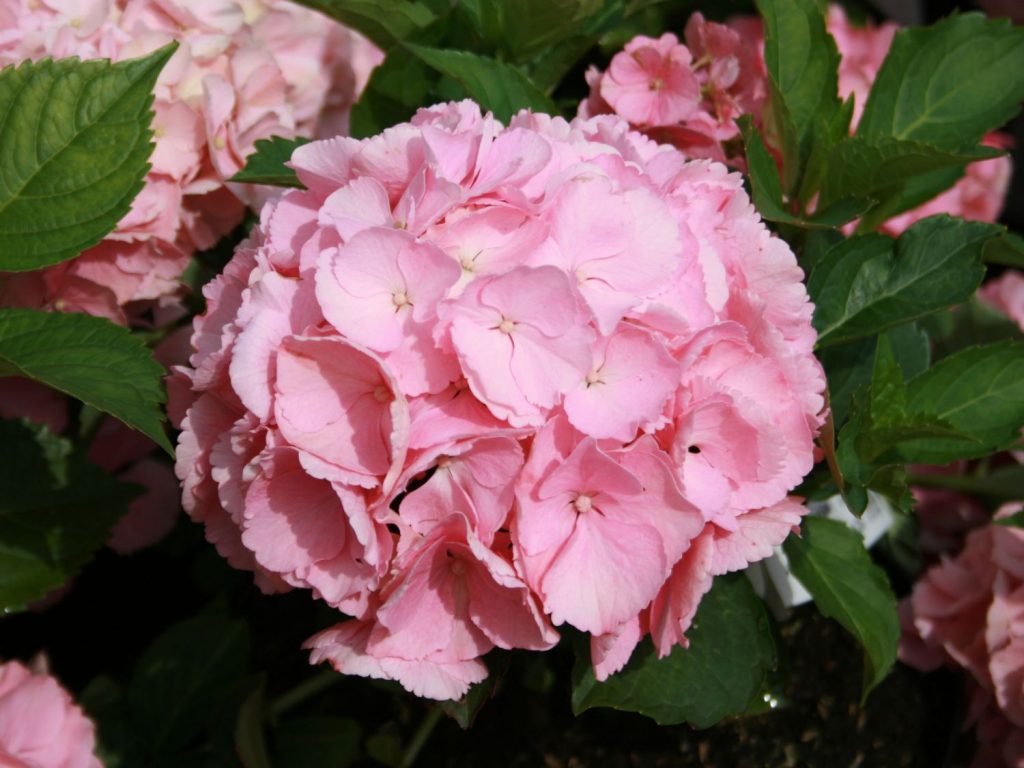
Hydrangea paniculata erly senseishen description
Mulching the soil prevents overheating and freezing of the root system. Peat, crushed bark, straw or sawdust are used as material for mulch.
Preparing for winter
Earley Senseishen is a frost-resistant crop, but this indicator progresses as the shrub develops.
Young plants (up to 2 years old) need shelter for the winter. The same applies to Hortensias, which are cultivated in regions with harsh climates.
Spunbond or a film is used as a material, which is covered with shoots bent to the ground. Spruce branches or leaf litter are distributed on top.
It is not recommended to use straw, because rodents like to feast on it.
Reproduction
Cuttings
The most productive way of reproduction, which is due to almost 100% rooting.
A part of the lateral process about 15-17 cm long with several growth buds is taken as cuttings.
The event itself is carried out in the initial phase of laying the buds in the early morning. It is best to cut off the branches from young shrubs, the old ones must be subjected to a rejuvenating haircut before the procedure.
The underside of the cuttings is preliminarily kept in a rooting biostimulator. If there is no such drug, it is replaced with water with honey diluted in it. Then they are placed in a liquid and kept in a shaded place until roots are formed. Subsequently, they are transplanted into a moistened mixture of peat and sand, covered with a film.
Layers
This method is propagated in early spring, until the buds of the plant wake up:
- Dig up the soil next to the bush.
- Along the perimeter of the perimeter of the peri-stem circle, radial grooves are made with a depth of about 2 cm, to which the branches are bent. To accelerate the process of root formation, the shoot is pulled with a metal wire at the level of the lower bud.
- The processes are fixed with staples, sprinkled with earth.
- By the end of August, young shoots appear, when they reach 15-20 cm, the plant begins to huddle regularly.
- In October, the layers are separated from the mother bush and transplanted.
Diseases and pests
Hydrangea Earley Senseiion is quite resistant to most pests and diseases, provided it is properly cared for. When deviating from agricultural technology, the risk of plant damage increases.
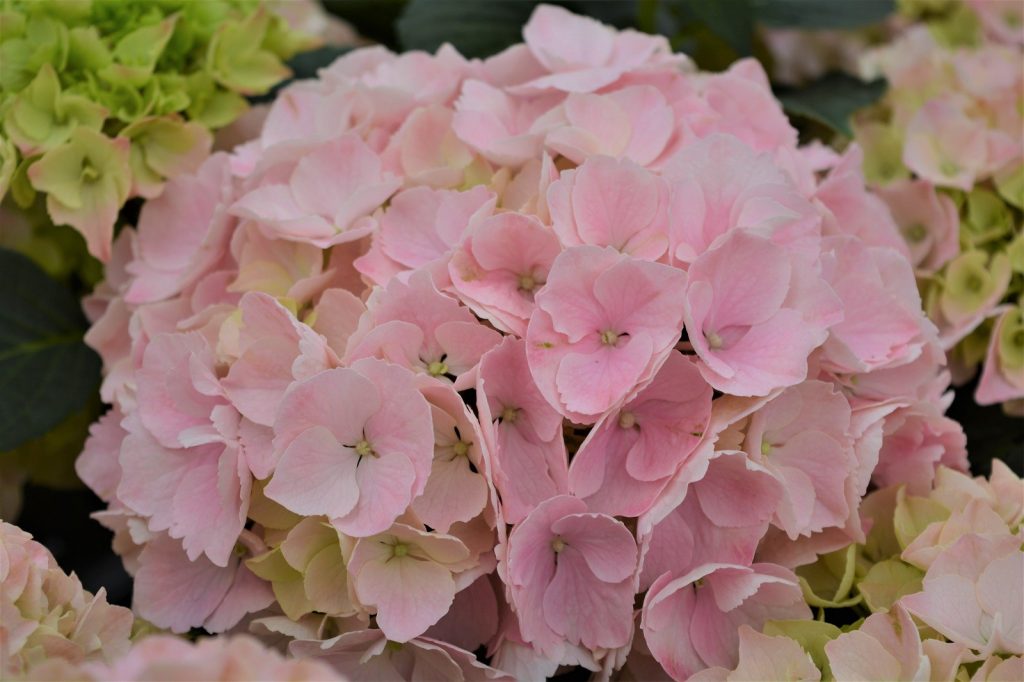
Hydrangea early senseishen reviews
If the primary symptoms of the disease are found, measures should be taken immediately to preserve the bush and prevent it from dying.
| Problem | Signs | Prophylaxis | Treatment |
| Rust | Oval-shaped red pads on the back of the leaf plate, spread over the entire surface as the disease progresses. The leaves turn yellow, fall off. | Timely they remove the site from plant residues, increase the resistance of plants through full adherence to agricultural techniques (planting dates, irrigation and feeding system), systematically spray with fungicidal preparations. | At the initial stage, it is enough to remove the affected segments. In case of a serious lesion, they are treated with Fitosporin, Baktofit, Abiga-Peak, Topaz or 1% solution of Bordeaux liquid. Additionally, you should pay attention to the neighbors of the culture, if conifers grow nearby, you need to spray them too, because they are carriers of rust. The procedure is repeated after 2 weeks. |
| Gray rot | At the initial stage, a grayish dust with a fluffy texture appears on young shoots and buds. In the future, the leaves lose their elasticity, a color change is observed. The last phase is mold, the dying off of parts of the plant. | They regularly loosen the soil, observe the irrigation regime taking into account the air temperature (in the cold season, a large amount of moisture is unacceptable). Avoid plant thickening and fertilizer overdose. | Eliminate all rotted segments, burn outside the site. They are treated with Bordeaux liquid (concentration 1%) or copper oxychloride (40 g per 10 l of water). Purchased drugs: Euparen Multi SP, Topsin M, Maxim, Trichophyte, Rovral SP. |
| Septoria (white spot) | Light yellow spots appear on the lower leaves, which later become brown or black, increase in size, and spread throughout the shrub. As a result, the leaves curl, dry out and fall off. | They regularly dig up the soil under the plant, remove plant residues, after cutting the cut sites, they are treated with fungicidal preparations (they also do preventive spraying, reducing the recommended dosage). | The affected areas are cut off, while part of the healthy tissue is captured. They are treated with Bordeaux liquid or Profit. |
| Aphid | Deformation of leaves, buds and shoots, suspension of growth. | Maintain plant health by fully following the requirements of the crop. In the fall, they carefully clean the territory, do timely weeding. Anthills are destroyed. | Folk methods: shampoo for animals, ammonia, ash dusting. Purchased funds: Aktara, Tanrek, Iskra Zolotaya, Monsoon, Tabu, Tsvetolux Bau, Respect. |
| Spider mite | Almost transparent whitish cobweb on the inside of the leaf plates, light dots on the surface, dry leaves. | The beds are regularly weeded, the substrate does not dry out, and the garlic infusion is sprayed. | Traditional methods: soapy water, alcohol solution. Systemic drugs: Plant-Pin, Fitoverm, Aktara, Kleschevit, Fufanon-Nova, Iskra-Bio, Tiovit-Jet. |
Use in landscape design
Hydrangea is a safe bet for decorating your garden. These rather voluminous bushes with large inflorescences and a long flowering period go well with other plants.
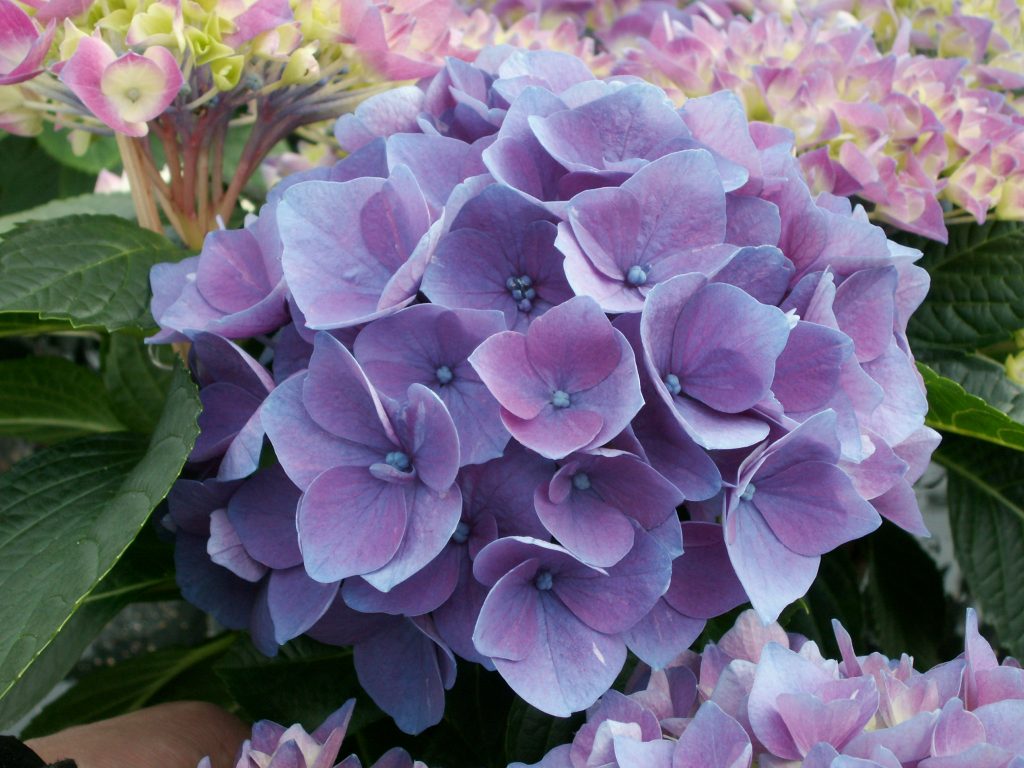
Earley senseishen hydrangea reviews
With their help, it is possible to create a unique atmosphere on the site, adhering to various styles:
- Village. In this case, Erly Senseishen is supplemented with chamomile, cornflower, marigolds, bells or violets. The shrubs will look good against the background of viburnum and pussy willow.
- Classic. In this variation, Hydrangea is combined with conifers, ferns, hosts, petunias.
- Japanese. Assumes the presence of a fountain or stream, next to which there are also fan maple, rhodendron, moss, undersized chrysanthemums.
This variety also looks great in a single version, while it may well play the role of a hedge for summer cottages.
Testimonials
According to many gardeners, Early Sensation M paniculata is a real find among Hydrangeas. In addition to the incredible appearance, which the plant is able to please the whole season, while changing the color scheme, flower growers emit excellent indicators of frost resistance and unpretentious care, which allows you to grow a crop regardless of the region and experience.

